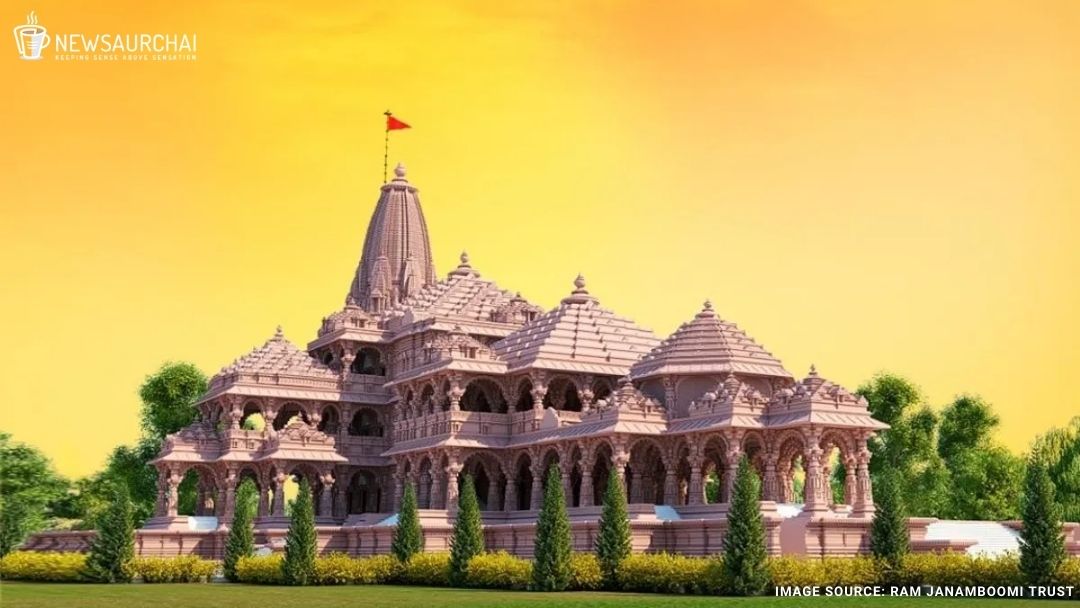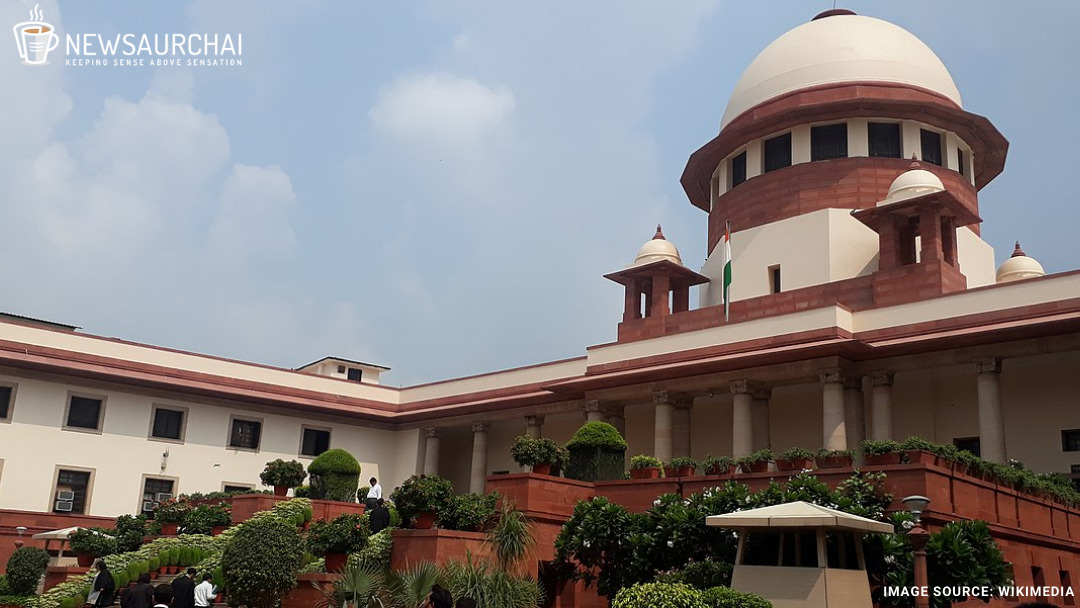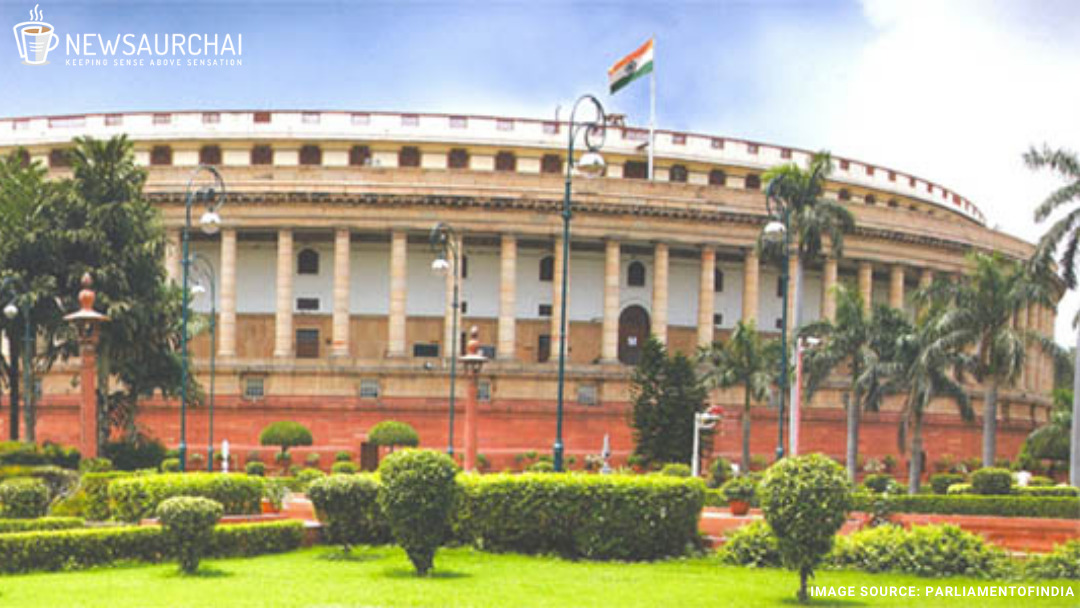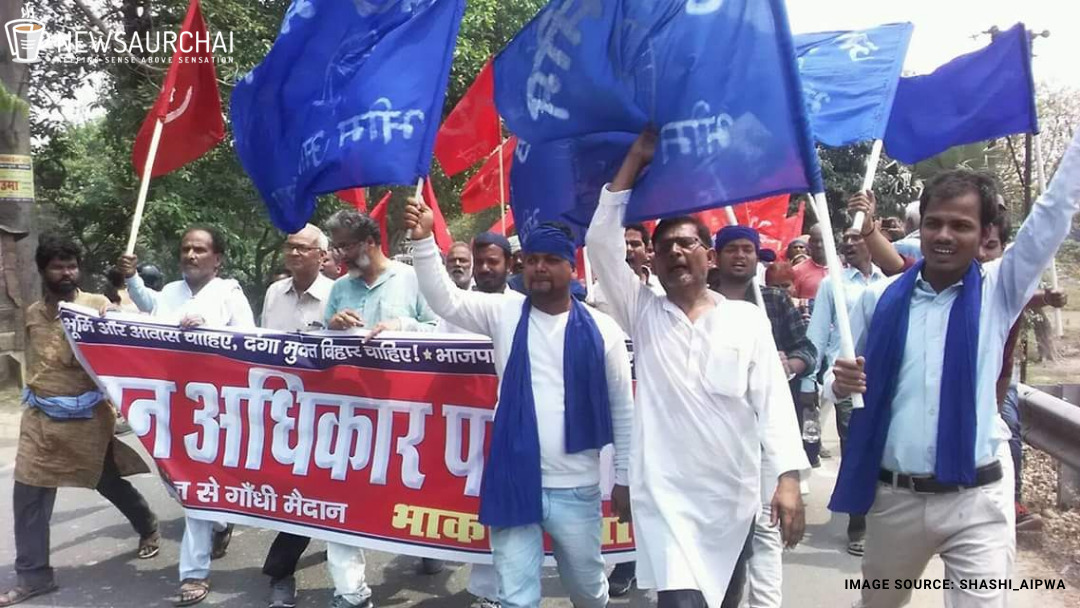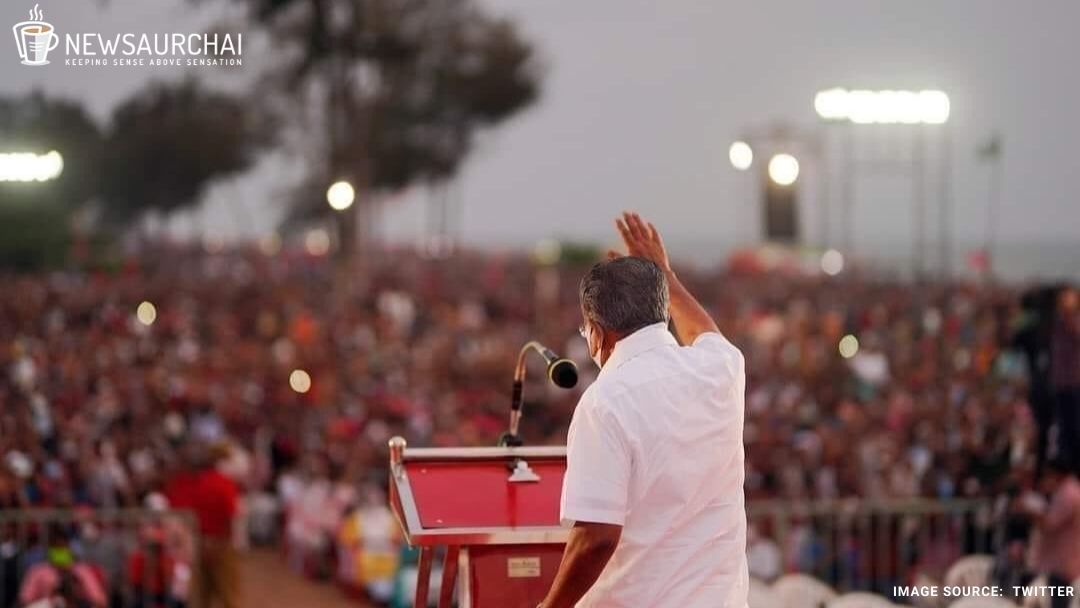
The ruling Left Democratic Front (LDF) government led by Chief Minister Pinarayi Vijayan returned to power for a second term. This is the first time in 40 years that the ruling party has returned for a second term in Kerela.
The election happened in the backdrop of a gold smuggling scandal.
The investigation of the Enforcement Directorate (ED) saw the buck stop at the Chief Minister Office. Ministers in the LDF government and Kerela Legislative Assembly Speaker P Sreeramakrishnan faced allegations. The UDF coalition saw this as an opportunity to get back in power. The Bharatiya Janata Party (BJP) was also looking to expand on its vote base.
LDF Government Bucks the Trend
The LDF government, formed in 2016, had a rough time managing disasters. It had to deal with the Ockhi cyclone in 2017. The Nipah virus outbreak in 2018 and a devastating flood in the year 2019. The government had to contend with the political changes brought in by demonetization and the Goods and Service Tax (GST).
Handling the aftermath of the crisis of the Ockhi cyclone and the Nipah virus won the government accolades. The alacrity with which the government responded to the outbreak of the virus saved lives in the state. Following operational procedures, isolation of patients, using N-95 masks and sticking to the guidelines helped the state overcome the epidemic.
The LDF government invested a lot of political capital in the agricultural sector. Post the deadly floods in 2019, it succeeded in bringing in 2 lakh hectares of land under paddy cultivation. The cultivation of paddy and arable land increased during the tenure. The government concentrated on improving facilities and the environment for organic farming. They used barren land to cultivate vegetables. Vegetable markets for organically produced vegetables were promoted by linking them to the Onam festival.
The other areas related to agriculture – plantations, coconut orchards, animal husbandry- saw initiatives that benefitted the people involved in those industries. The LDF government also built 28,000 houses as a part of its ambitious LIFE (Livelihood Inclusion and Financial Empowerment) Mission, which strives to provide housing for all the landless in the state. In a report, a progress card from 2016-2019, launched by Governor, the government fulfilled 580 of the 600 promises promised during the 2016 elections.
On the eve of the elections, the LDF government launched a populist manifesto. It promised a pension of ₨ 2500 to women homemakers. To the farmers, they promised to increase their income by 50 per cent. A few of the items included in the manifesto were – 5000 crores earmarked for the development of the coastal areas; housing for all Adivasis; increasing the number of SMEs and MSMEs to 3,00,000; creation of valued-added industries; doubling the outlay of tourism and allotting 60,000 crores for infrastructure.
COVID Management
The experience of handling the Nipah outbreak helped the Kerala government in the management of the Covid-19 pandemic. As the first case got reported, the Health Ministry in the state used technology to collate data. The medical boards and institutions came up with the concept of ‘home isolation’, set up COVID centres and came up with protocols. The experience of Nipah ensured the citizens of the state adapted quickly to the crisis.
The use of technology to collate data was limited to the first 500 patients. This led to a blind spot in data during the latter half of the pandemic’s first wave and second wave. The rising figures of Covid-19 cases put a spotlight on Kerala. Yet, it remains one of the better-managed states during the second wave in the country. It is the only state to have a surplus of oxygen supply while the northern states are waiting in despair for oxygen.
Despite allegations of mismanagement of flood relief funds in 2019 and investigation into the Chief Minister and sitting ministers, the crisis management ability of the government and its populist manifesto seems to have worked in favour of the government.
Impact of Rahul Gandhi
In the 2019 general elections, Rahul Gandhi left the seat of Amethi in Uttar Pradesh to contest from Wayanad. He won the seat with 4,31,770 votes. During the Lok Sabha elections, Congress won 19 out of 20 seats.
Looked on in the Congress party as a Prime Minister in the waiting, Rahul Gandhi is the second most crucial cog in the Congress machinery. He enjoys immense popularity in the southern states of Tamil Nadu and Kerala. In Kerala, 58 per cent of the voters prefer Rahul Gandhi as the Prime Ministerial candidate. He was the star campaigner for Congress in Kerala.
However, the Congress party failed to hold on to the gains made in the Lok Sabha elections. In the recently held local body polls, the LDF coalition trumped Congress. The LDF won 514 of the 941 Gram Panchayats, 10 of the 14 District Panchayats and 108 of the 152 Block Panchayats.
Rahul Gandhi started his election campaign far before that of the BJP in the current assembly elections. He frequently visited the state during the campaign. In Thiruvananthapuram, he courted controversy stating that going to Kerala was refreshing because the people were interested in and not just go superficially into details.
He has been unable to control the dissent within the party. Many senior Congress leaders jumped the ship to the BJP-led alliance before the polls. Today, it is reported that the young leaders given tickets on the behest of Rahul Gandhi did not fare well in the election.
The Unique Relation of Left and Congress in Kerala
The Left and Congress share a unique relationship. From the pre-independence time to the current day, they have shared the stage as opposition and allies. Despite being political opponents in states, the Left and Congress enjoyed political bonhomie at the national level.
The Communist Party split when a faction of the party supported Nehru during the 1962 war. Indira Gandhi relied on the Left to save her government when the Congress party split in 1967. The UPA coalition that came to power in 2004 enjoyed the support of the left parties in the Parliament until they withdrew support during the No-Confidence motion when the government pursued a civil nuclear deal with America.
With the emergence of the BJP as a dominant political force, the Left and the Congress continued to ally in elections across the country. With the Congress splitting into multiple factions during 1957-1980 and the Left being a dominant political force, the UDF coalition consisting of Congress and the LDF remained political rivals.
Star Performers
Chief Minister Pinarayi Vijayan, health minister KK Shailaja, Devaswom Minister Kadakampally Surendran, Power Minister M M Mani and Higher Education Minister KK Jaleel are prominent leaders of the ruling party testing their luck with the voters.
The Congress pinned its hopes on Opposition leader Ramesh Chennithala, former Chief Minister Oommen Chandy, senior leaders K Muraleedharan, PT Thomas and Thiruvanchoor Radhakrishnan to carry them to victory.
The BJP fielded former Mizoram Governor Kummanam Rajasekharan, ‘Metroman’ E Sreedharan, state president K Surendran, senior leader Shobha Surendran, Rajya Sabha members Suresh Gopi and K J Alphons to contest the election in the hopes to expand its vote share.
All the high profile candidates of the ruling LDF coalition secured victories in their constituencies. CM Pinarayi Vijayan won the Dharmadam seat with a margin of 50,123 votes defeating the Congress party representative. Kadakampally Surendran won his constituency with a margin of 23,497 votes defeating BJP leader Shobha Sundaresan. Having amassed goodwill with her handling of the Nipah and Covid-19 outbreaks, health minister KK Shailaja won Mattanur with a whopping 60,000 votes.
Congress stalwarts Oommen Chandy and Ramesh Chennithala won their constituencies Puthuppally and Haripad with a margin of 9,044 votes and 13,666. BJP bigwigs Kummanam Rajasekharan, ‘Metroman’ E Sreedharan, Suresh Gopi, registered their presence in the initial rounds of counting but could not hold onto their leads.
Presence of the Bharatiya Janata Party
The BJP did not win any constituency in the 2021 Kerala Assembly election. Yet, it has retained its vote share. It received around 12 per cent of the votes polled.
The BJP roped in its star campaigners Prime Minister Narendra Modi, Union Home Minister Amit Shah, UP Chief Minister Yogi Adityanath and Union Minister Smriti Irani to campaign in Kerala. Their manifesto was populist on the lines of its political opponents. It carried the plank of Hindutva along with it.
The BJP hoped to make inroads weaving its political strategy around the issues of the Sabarimala temple and love jihad. They promised to enact a law against law jihad if they came to power. Of late, the Syro-Malabar Church has commented that the radical elements in the Muslim community were targeting Christian girls in the name of love jihad. The Jacobite Church said it was open to allying itself with the BJP to counter the Orthodox Church.
Apart from the Church, the BJP is looking to gain the votes of the Nair and Ezhava Hindu communities in Kerala. In the current election, it allied with a party representing the subaltern Ezhava community in the state. Though the LDF and UDF remain the dominant political coalitions, the BJP is slowly making inroads into Kerala.


